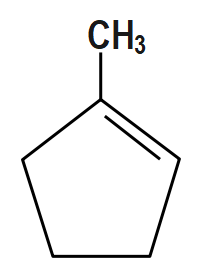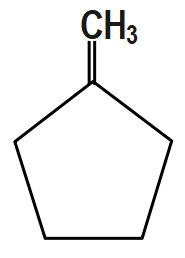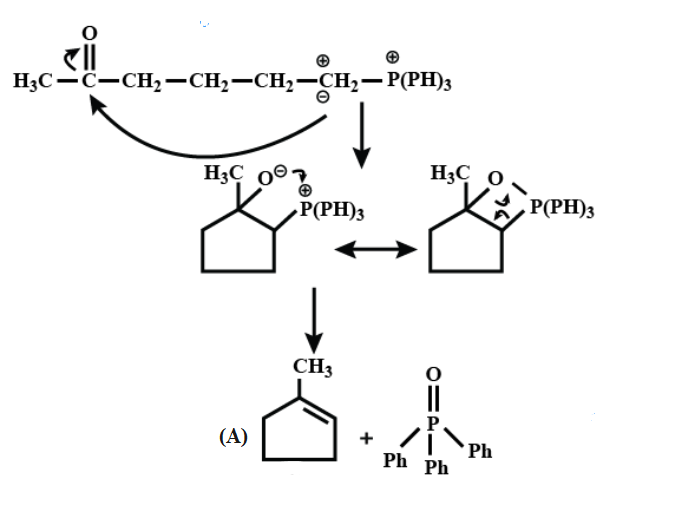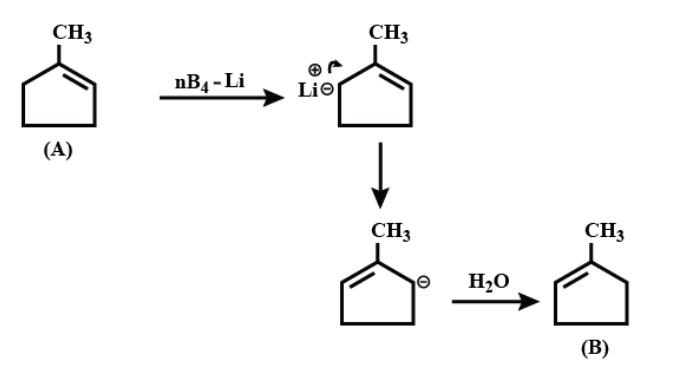
What is (B) in the following sequence of reactions?
(A)

(B)

(C) $ C{{H}_{3}}-CH=CH-C{{H}_{2}}C{{H}_{2}}C{{H}_{3}} $
(D) $ C{{H}_{3}}-C(=O)-C{{H}^{2}}C{{H}_{2}}C{{H}_{2}}{{C}_{4}}{{H}_{3}} $


Answer
512.4k+ views
Hint :We know that in order to know how to solve a stoichiometry problem, we must first know what a stoichiometry is. Stoichiometry is the relationship between the quantities of the reactants and the products. If we know the quantity of the reactant it will be easy to determine the product.
Complete Step By Step Answer:
Let us understand deeply about stoichiometry. Stoichiometry will be based on the Law of conservation of mass. That means that the total mass of the reactants will be equal to the total mass of the products. If we know the amount of the reactants, from that we can calculate the amount of the product. We can determine the quantity of the product empirically from the quantity of the reactant.
We have to remember that there are four steps for solving a stoichiometric problem.
First thing is that we have to write a balanced equation. We have to always keep in mind that the constituent part of a chemical reaction is neither destroyed nor lost. The reactions yield must correspond to the reactant.
The next step is to convert the unit into the moles. When a unit is converted into moles it will involve the conversion factor. The main aim of the conversion factor is to convert units such as the grams, volume of a gas into moles or vice versa.
Now by using the mole ratio, we have to calculate the other substance (product).
Here, First step is an example of the Wittig reaction and then in addition to the base $ Bu-Li, $ it gives a thermodynamic product.

On further continuing the reaction;

Therefore the correct answer is option A.
Note :
Remember that we have to remember that stoichiometry compounds and non-stoichiometry compounds are different from one another. Non-stoichiometry compound is mostly an inorganic compound whose proportions of the elemental composition cannot be determined by the ratio of the natural number.
Complete Step By Step Answer:
Let us understand deeply about stoichiometry. Stoichiometry will be based on the Law of conservation of mass. That means that the total mass of the reactants will be equal to the total mass of the products. If we know the amount of the reactants, from that we can calculate the amount of the product. We can determine the quantity of the product empirically from the quantity of the reactant.
We have to remember that there are four steps for solving a stoichiometric problem.
First thing is that we have to write a balanced equation. We have to always keep in mind that the constituent part of a chemical reaction is neither destroyed nor lost. The reactions yield must correspond to the reactant.
The next step is to convert the unit into the moles. When a unit is converted into moles it will involve the conversion factor. The main aim of the conversion factor is to convert units such as the grams, volume of a gas into moles or vice versa.
Now by using the mole ratio, we have to calculate the other substance (product).
Here, First step is an example of the Wittig reaction and then in addition to the base $ Bu-Li, $ it gives a thermodynamic product.

On further continuing the reaction;

Therefore the correct answer is option A.
Note :
Remember that we have to remember that stoichiometry compounds and non-stoichiometry compounds are different from one another. Non-stoichiometry compound is mostly an inorganic compound whose proportions of the elemental composition cannot be determined by the ratio of the natural number.
Recently Updated Pages
Master Class 12 Economics: Engaging Questions & Answers for Success

Master Class 12 Maths: Engaging Questions & Answers for Success

Master Class 12 Biology: Engaging Questions & Answers for Success

Master Class 12 Physics: Engaging Questions & Answers for Success

Master Class 8 Maths: Engaging Questions & Answers for Success

Class 8 Question and Answer - Your Ultimate Solutions Guide

Trending doubts
Which animal has three hearts class 11 biology CBSE

1 Quintal is equal to a 110 kg b 10 kg c 100kg d 1000 class 11 physics CBSE

Explain zero factorial class 11 maths CBSE

Mention the basic forces in nature class 11 physics CBSE

What is centripetal acceleration Derive the expression class 11 physics CBSE

Bond order ofO2 O2+ O2 and O22 is in order A O2 langle class 11 chemistry CBSE




